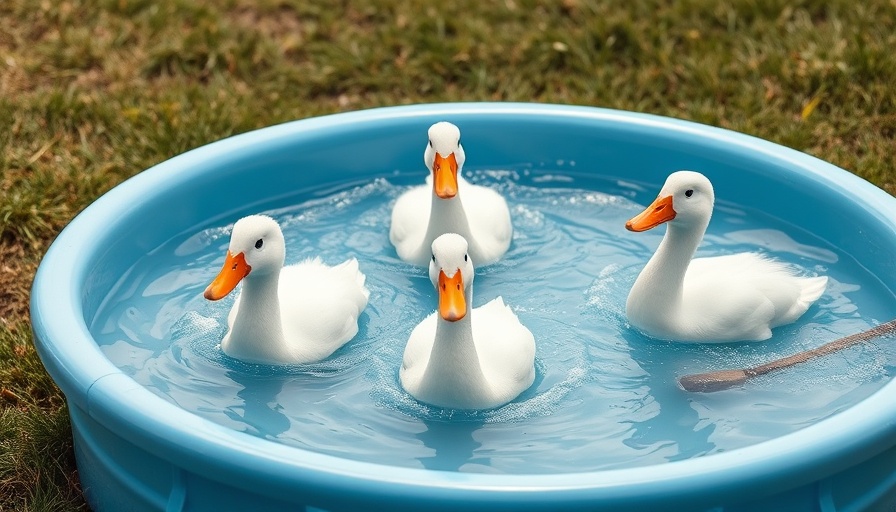
Enhancing Your Experience: The Benefits of Raising Friendly Ducks
Raising ducks offers a unique experience beyond just providing food or aesthetic value. A friendly flock can transform your interactions from mere chores into delightful companionship, creating long-lasting bonds with your avian friends. Not only do amicable ducks make caring for them enjoyable, but they also foster a calmer environment that's beneficial for their well-being.
Choosing the Right Breed: The Foundation of a Friendly Flock
When embarking on your duck-raising journey, choosing the right breed is crucial. Breeds such as Welsh Harlequins, Saxony, and Buff are renowned for their calm demeanor and sociability. In contrast, some breeds, like Khaki Campbells and Runners, may exhibit nervous tendencies that could complicate your goal of raising a friendly flock. Carefully considering breed characteristics will lead to a smoother, more rewarding experience.
Imprinting: The Key to Building Lasting Bonds
Introducing ducklings into your environment provides an opportunity for imprinting— a natural process where ducklings associate their first experience with their caregiver as maternal. Ducklings that bond with humans tend to exhibit less skittishness and are more comfortable being handled throughout their lives. Regular gentle interactions can foster this connection, which ultimately results in a more amiable flock.
Creating a Calm Environment: Techniques for Gentleness
Once you've established your flock, employing techniques to maintain their calmness is paramount. Ducks may startle easily, making handling methods and environmental stability essential. Gentle verbal cues and hand signals can facilitate communication, easing the dynamics of care. This approach encourages ducks to respond positively, minimizing anxiety within the flock.
The Emotional Benefits of a Friendly Flock
Beyond practical advantages, raising friendly ducks can offer emotional rewards. Interacting with calm and loving birds can lower stress levels and improve well-being for both caregiver and flock alike. The joy derived from these relationships makes the effort exerted in maintaining their friendliness incredibly worthwhile.
 Add Row
Add Row  Add
Add 




Write A Comment